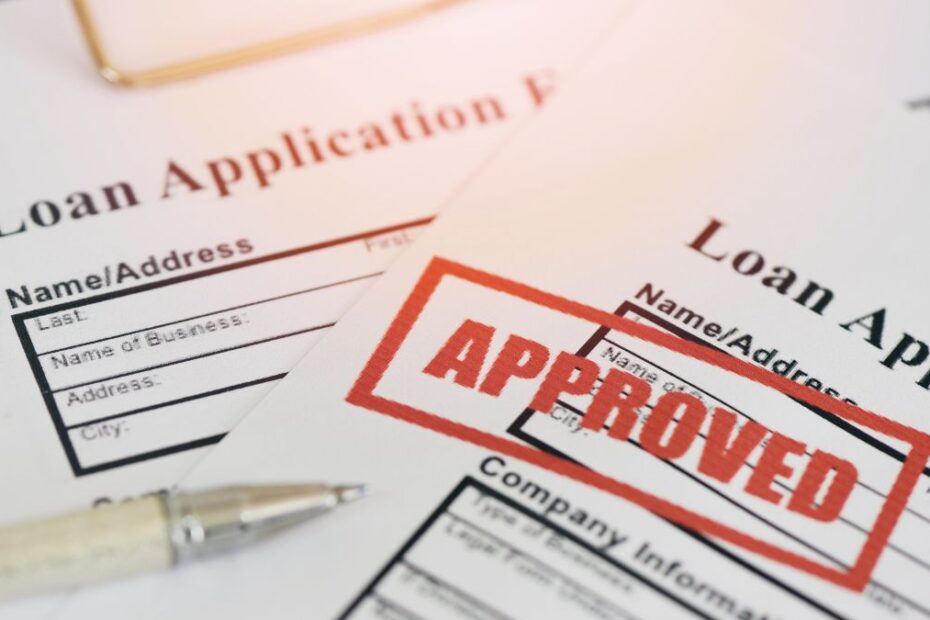In today’s competitive job market, higher education has become more important than ever. However, the rising cost of education often makes pursuing degrees or certifications seem financially daunting. Enter the PM Student Loan, a financial tool designed to make it easier for students to “level up” their education without the constant worry of how to pay for it. This article delves into what the PM Student Loan offers, how it works, and how it can help students achieve their educational and career goals.

1. What is the PM Student Loan?
The PM Student Loan is a financial product aimed at helping students cover the cost of education, including tuition, fees, housing, textbooks, and other related expenses. Unlike traditional student loans that may come with rigid terms and high-interest rates, the PM Student Loan is designed with the modern student in mind. It offers flexibility, competitive interest rates, and various repayment options that cater to different financial situations.
Students who qualify for the PM Student Loan can use it for undergraduate or graduate degrees, technical certifications, or even specialized courses that enhance professional skills. The goal of this loan is to empower students to invest in their education and future careers without the immediate financial strain that often accompanies educational pursuits.
2. Why Do Students Need Financial Assistance?
The cost of education has risen dramatically in the last few decades, leaving many students and families struggling to afford it. A growing number of students cannot pay for their education out of pocket, especially when considering the added expenses of textbooks, housing, transportation, and technology. Scholarships and grants help, but they rarely cover the full cost of education. As a result, student loans have become a critical source of financial aid for millions.
The PM Student Loan is designed to bridge the gap between what students can afford and the actual cost of their education. It provides students with the resources they need to pursue higher education and enhance their future earning potential.
3. How Does the PM Student Loan Work?
The PM Student Loan works similarly to other student loans but comes with added benefits that set it apart. Students can apply for a loan through the PM Loan Program, which assesses their eligibility based on factors like credit history, income, and the cost of education. Once approved, the loan amount is disbursed directly to the educational institution to cover tuition and other eligible expenses.
One key advantage of the PM Student Loan is its flexible repayment options. Borrowers can choose to begin making payments while still in school, or they can opt for deferred payments, meaning they won’t have to start repaying the loan until after they graduate. This flexibility makes it easier for students to focus on their studies without worrying about immediate financial burdens.
4. Types of PM Student Loans
The PM Loan Program offers different types of student loans, each tailored to specific educational needs:
- Undergraduate Loans: These loans are available to students pursuing a bachelor’s degree and cover tuition, fees, and other associated costs.
- Graduate Loans: Designed for students continuing their education at the master’s or doctoral level, graduate loans typically offer higher borrowing limits to cover the increased cost of advanced degrees.
- Career and Technical Education Loans: These loans support students pursuing non-degree certifications, technical training, or specialized courses that are crucial for career advancement.
- Parent Loans: These loans allow parents to borrow on behalf of their children to help cover the cost of education.
Each type of loan is designed to meet the specific needs of the borrower and ensure they have the financial resources necessary to complete their education.

5. Benefits of the PM Student Loan
The PM Student Loan offers numerous benefits, making it an attractive option for students. Some of the key advantages include:
- Competitive Interest Rates: The PM Loan Program offers low interest rates compared to traditional student loans, helping students save money in the long run.
- Flexible Repayment Options: Borrowers can choose from several repayment plans based on their financial situation, including deferred payments, interest-only payments while in school, and fixed repayment plans.
- No Origination Fees: Unlike some loans that charge upfront fees, the PM Student Loan has no origination fees, meaning students can borrow what they need without paying additional costs.
- Grace Period: After graduation, students are typically given a grace period before they are required to start making payments, allowing them time to find a job and get settled before taking on loan repayment.
These benefits make the PM Student Loan a smart choice for students looking to fund their education with manageable long-term financial terms.
6. How to Apply for the PM Student Loan
The application process for the PM Student Loan is straightforward and can be completed online. Here’s a step-by-step guide:
- Determine Loan Eligibility: Students should first check the eligibility criteria, which may include enrollment in an accredited program, good credit standing, and a demonstrated need for financial assistance.
- Gather Required Documentation: Applicants will need to provide proof of enrollment, cost of attendance, personal identification, and financial information, such as tax returns or bank statements.
- Submit an Online Application: The application form is available on the PM Loan Program’s website, where students can fill out their information and select the type of loan they are applying for.
- Review Loan Terms: Once approved, students will receive an offer outlining the loan terms, including the interest rate, repayment options, and loan limits.
- Accept and Sign the Loan Agreement: After reviewing the offer, students must accept and sign the loan agreement before the funds are disbursed to their educational institution.
By following these steps, students can secure the funding they need to pursue their educational goals.
7. Repayment Options for PM Student Loans
One of the standout features of the PM Student Loan is its range of repayment options, designed to accommodate different financial situations. Some of the repayment plans include:
- Standard Repayment Plan: Fixed monthly payments over a set period, typically 10 years.
- Income-Driven Repayment Plan: Monthly payments are based on the borrower’s income, making it more manageable for those with lower starting salaries.
- Interest-Only Payments: Borrowers can choose to make interest-only payments while still in school, reducing the total amount of interest that accrues during their education.
- Deferred Payment: Students can defer payments until after graduation, although interest will continue to accrue during this time.
These flexible options ensure that students can find a repayment plan that suits their financial circumstances.
8. Building Credit with the PM Student Loan
One of the lesser-known benefits of the PM Student Loan is its potential to help students build credit. By making consistent, on-time payments, borrowers can establish a positive credit history, which is crucial for future financial endeavors, such as buying a home or securing a car loan.
For many students, a student loan is their first major financial responsibility. Properly managing loan payments can lay the foundation for a strong credit score, which will be beneficial long after the loan is paid off.

9. Avoiding Default on Student Loans
Defaulting on a student loan can have serious financial consequences, including damage to credit, wage garnishment, and legal action. To avoid defaulting, students should:
- Stay in Communication with the Lender: If financial difficulties arise, it’s essential to contact the lender to explore alternative payment plans or deferment options.
- Enroll in an Income-Driven Repayment Plan: This can help reduce the monthly payment to an affordable level based on the borrower’s income.
- Set Up Automatic Payments: Many lenders offer a discount for setting up automatic payments, and it ensures that payments are made on time every month.
Taking these steps can help students avoid the long-term consequences of defaulting on their loans.
10. Comparing the PM Student Loan to Other Loans
The PM Student Loan stands out from other student loans due to its borrower-friendly terms. Compared to traditional loans offered by private lenders, the PM Student Loan provides lower interest rates, more flexible repayment options, and no hidden fees.
Additionally, federal student loans may offer some advantages, such as loan forgiveness programs, but they often come with borrowing limits that do not cover the full cost of education. The PM Student Loan can be an excellent complement to federal loans, helping students cover any remaining expenses without taking on excessive debt.
11. Success Stories: Students Who Leveled Up with PM Loans
Many students have successfully used the PM Student Loan to achieve their educational and career goals. These success stories include individuals who pursued degrees in fields like engineering, healthcare, and technology, ultimately landing high-paying jobs that allowed them to quickly repay their loans.
For these students, the PM Loan provided the financial support needed to focus on their studies without constantly worrying about how to pay for their education. Their stories serve as an inspiration for future borrowers looking to level up their education.
12. Is the PM Student Loan Right for You?
The PM Student Loan is an excellent option for students who need financial assistance to cover the cost of their education. Whether you’re pursuing a bachelor’s degree, a graduate program, or a specialized certification, the PM Loan offers competitive terms, flexible repayment options, and no hidden fees.
Before applying, students should carefully consider their financial needs, eligibility, and long-term career goals. If you’re looking for a way to finance your education and level up your future, the PM Student Loan could be the perfect solution.
Conclusion
The PM Student Loan offers students a valuable tool to finance their education without the burden of exorbitant interest rates or restrictive repayment terms. By providing flexible options and support throughout the educational journey, the PM Loan enables students to focus on achieving their academic goals and building a successful career. For anyone looking to level up their education, the PM Student Loan is worth considering.

FAQs
- What is the PM Student Loan?
The PM Student Loan is a financial aid option designed to help students cover the cost of education, including tuition, fees, and related expenses. - Who is eligible for the PM Student Loan?
Eligibility depends on factors such as enrollment in an accredited program and financial need. - How do I apply for the PM Student Loan?
The application process can be completed online, requiring personal, financial, and educational documentation. - What are the repayment options?
Repayment options include standard, income-driven, interest-only, and deferred plans. - Can I defer payments while in school?
Yes, students can opt to defer payments until after graduation. - Are there any fees associated with the PM Student Loan?
No, the PM Student Loan does not charge any origination fees. - Does the PM Student Loan offer low interest rates?
Yes, the PM Loan Program offers competitive interest rates. - Can parents apply for the loan on behalf of their children?
Yes, parents can apply for Parent Loans to assist their children with educational expenses. - What can I use the loan for?
The loan can be used for tuition, fees, housing, textbooks, and other educational expenses. - What happens if I can’t make my payments?
If you face financial difficulties, you should contact the lender to explore alternative payment options. - Can I repay the loan early?
Yes, borrowers can repay the loan early without penalty. - Is the PM Student Loan better than federal student loans?
It depends on individual circumstances. The PM Loan offers competitive terms and flexible repayment options, making it a valuable option for students who need additional financial support beyond federal loans.
